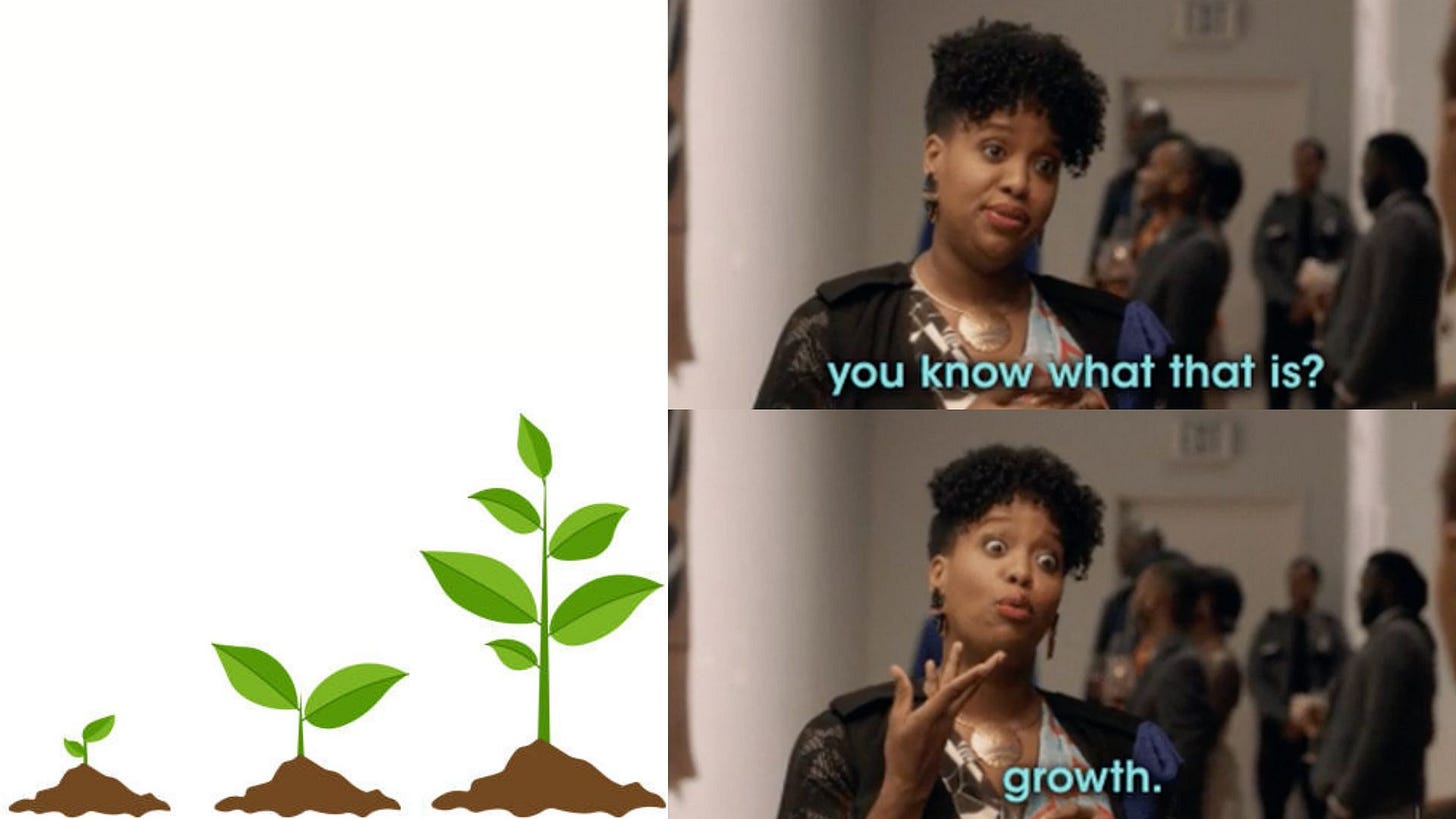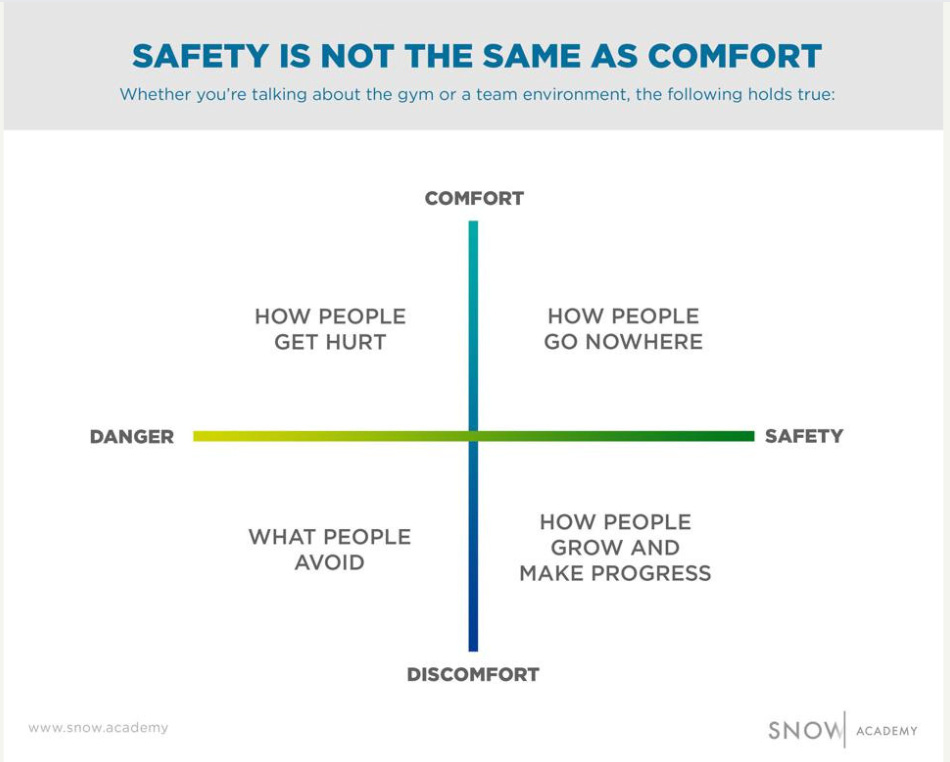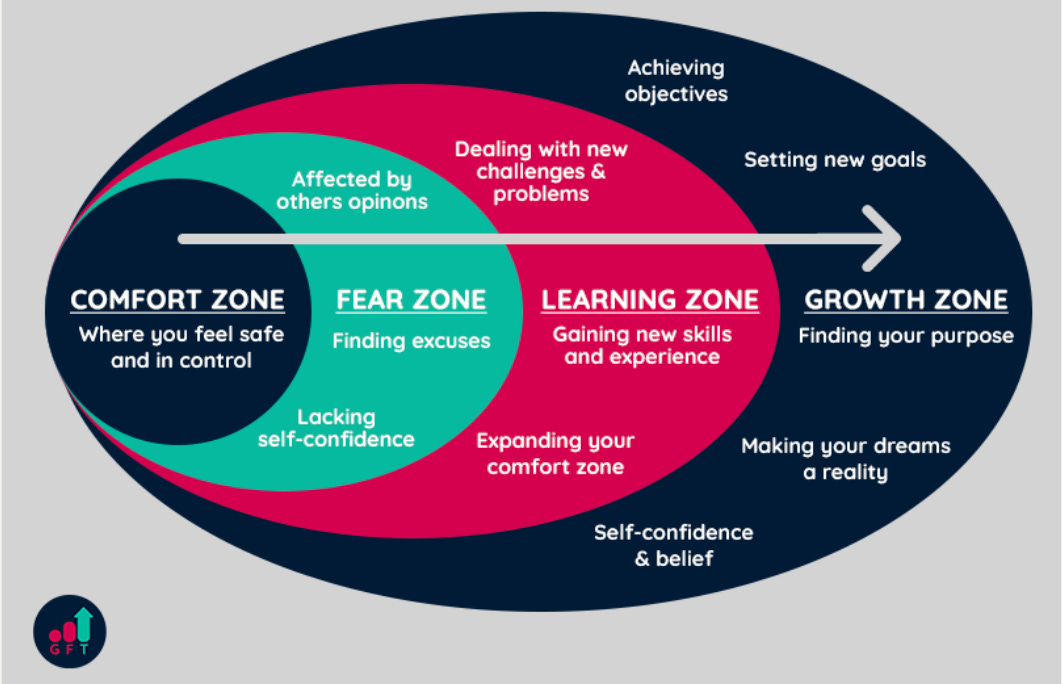
I’m excited to share my first exercise on this ‘stack! As a young teen poet, prompts and exercises provided in workshops and writing circles were revelatory for me: a portal to self-reflection where the doorframe was architected by someone else, but what I discovered beyond was all my own. As I became a teaching artist and then a facilitator with teams and collaborators, my belief in the infinite potential of individual reflection only deepened. It is, indeed, what only you can do ;)
I developed the exercise I’m sharing today when asked by a creative agency to lead an interactive workshop built around their off-site’s theme - Cultivating Creative Courage. Always a sucker for alliteration, what I especially loved about the theme was the vulnerability of the word courage, an unusual one in the realm of business and bottom lines. In speaking with the off-site organizers, they shared that many of their team members struggled with risk-taking. The company had a great work culture and collective morale, but it was harder for individuals to go out on a limb and challenge themselves to potentially fail in service of a bold, unlikely move. How can they stop playing small, and allow themselves to stumble so as to soar?
I approach facilitation and workshop design as a researcher first, both asking probing questions of the client who’s bringing me in, and scouring resources and learnings to frame the work we do together. For the premise of cultivating creative courage, I dove deep on the concept of psychological safety, and exploring the distinction between safety and comfort.
Psychological safety, a concept first coined for use in the business world by Amy Edmonson, means “a belief that one will not be punished or humiliated for speaking up with ideas, questions, concerns or mistakes, and that the team is safe for interpersonal risk-taking.” In 2013, Google published the findings of a two-year study of effective teams at the company and found that psychological safety was the #1 determinant; “success” was not predicated on the number of degrees amongst the team or the collective level of acumen and experience, but truly how safe team members felt to ask and share anything other than clear-cut achievement, confidence and mastery.
When leaders or managers focus less on supervising standards of performance and more on cultivating psychological safety — particularly by modeling their own infallibility, and centering curiosity and openness rather than exacting expertise — people who work with them feel less pressure to be fully-formed and right 100% of the time. By creating space to explore the unknown and dare to grow, team members can better discover and strengthen their own capacities, and take the type of risks that lead to breakthroughs.
Think about a leader in your life past or present — at work, at school, or elsewhere — who did not get the memo about psychological safety. How did interacting with them feel for you? Because of their demands or expectations, what was lost or limited? Now think about someone in your life that creates the type of space where questions and mistakes aren’t met by embarrassment or shame. How does being in their orbit feel? What possibilities are nurtured there?
Even though they’re often used as synonyms, safety and comfort are not the same. Risk-taking requires a foundation of safety, but also requires discomfort. You can’t grow if you stay comfy where you’re at; you need to feel pushed to the edge, and past your edge, in order to expand. And so many of us stay in a space of comfort because it is a space of control, that warm-and-fuzzy illusion we cling to especially when everything else feels chaotic and unwieldy.
I like how clean-cut and blunt the below diagram is in showing the difference between safety and comfort, and I think the analogy of the gym is such a helpful illustration. Instead of dissecting it for you, I’ll let you take a moment to reflect on the quadrants, and what comes up for you when you consider them.
Going from a space of comfort and control to discomfort and growth necessitates confronting both your own fear and defense mechanisms as well as embracing the humbling distance between where you’re at right now and where you wish to be. It’s not as simple as an on/off switch, a decision made in one moment — “I’m going to be uncomfortable now!” — or using different words to describe or define yourself. I think of the idea of “anti-racism,” and how some people simply self define themselves as such or as an “ally” but stop there, as if a shift in verbiage is meaningful at all besides assuaging guilt. To be truly anti-racist requires action beyond acknowledgement; it takes work, learning, humility, commitment, accountability to self and to community.
And yes, to have integrity as a self-identified anti-racist person, or as a person who wishes to see structures like capitalism or colonialism dismantled, discomfort (emotionally and materially) is a requirement.
I like the diagram below because it illustrates that growth is simply not possible without moving through fear and through the work of learning — again, to grow is not a decision made in a moment but a sustained commitment to face and power through what keeps us trapped in our little node of comfort, control, and stasis. Growth isn’t a toggle, it’s a continual shift and push.
So let’s get to the exercise. At the off-site workshop I facilitated, I first presented the above information and encouraged dialogue in small groups about what came up for folks when presented with this information, particularly the distinctions of comfort and safety. Then, I had them whip out their notebooks to reflect on the questions below. Even if later they would share what came up from them in a group, carving out a short but sacred space for quiet, individual reflection allows people to go so much deeper than they would via conversation alone.
To be courageous means to confront, to share with vulnerability, and to dedicate yourself to the inherently uncomfortable work of growth. And to grow, it’s worth considering what we want to let go of and what we want to shine light on; in order for growth to come to the surface, you gotta both make space and take up space.
Block out twenty minutes of your schedule, either solo or with friends or colleagues, to explore the exercise below.
Exercise: SLOW/SHOW/GROW (20 min)
What you need: a notebook and pen, a timer.
When you see a time listed in parenthesis, put the amount of time on your timer and complete the prompt below. Even if you feel “done” before time is up, challenge yourself to expand on what you wrote down. Move on when the timer is done.
SLOW (3 min)
What habits, activities or thoughts do you wish to pump the breaks on? What keeps you in the self-defeating cycle of comfort and control? What do you want to release?
If you’re feeling stuck, finish the sentence: “I want to slow down on/my _________.”
SHOW (3 min)
What of your personal capabilities, perspectives and modes of self-expression do you wish to shine more light on and share more widely? What value do you hope to be recognized for?
If you’re feeling stuck, finish the sentence: “I want to reveal my __________.”
GROW (3 min)
What skills, knowledge or practices do you wish to explore and learn? What qualities and values within yourself do you hope to strengthen? How do you hope to grow?
If you’re feeling stuck, finish the sentence: “I want to become _________.”
TOWARDS ACTION & SUPPORT (5 min)
Reflect on the three sections you just wrote down. Circle a couple of words or phrases in each section that feel most challenging or freak you out more than the others - what pushes you past comfort?
Of the three sections— Slow, Show and Grow — which section feels most possible to take action on today? What does that action look like? How does that action reinforce safety and extend grace, and how does it depart from what feels comfortable or your default?
If you did this exercise alone, who is one person you can share your reflections with to call in support for what you hope to actualize? If you did this exercise with others, what’s one way you’d like for folks to support you in your intentions to release, to reveal, and/or to grow?
I hope you enjoyed this exercise and would love to hear in the comments below anything that arose for you! I’d also love to know if coming up with a slide deck versus a text block would feel most useful to isolate each prompt and allow you to be more present during the exercise… I’m down to provide that resource if it feels like it would better facilitate your reflection :)
Finally I want to give a shout-out to
of , whose Anti-Resolution Guide has been my guiding New Year exercise for the last few years and who contributed to this exercise for Substack!with love and appreciation,
<3 hollis





